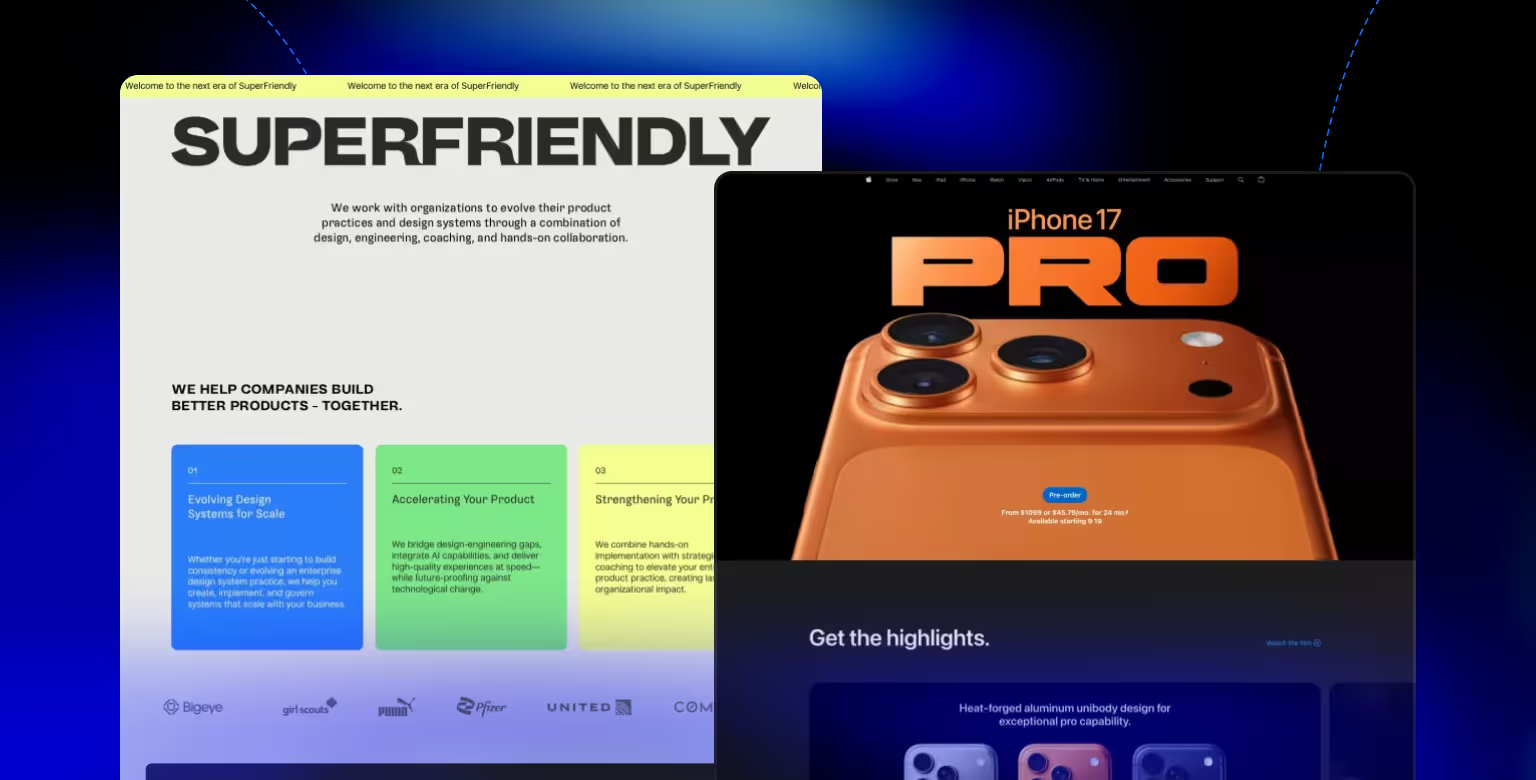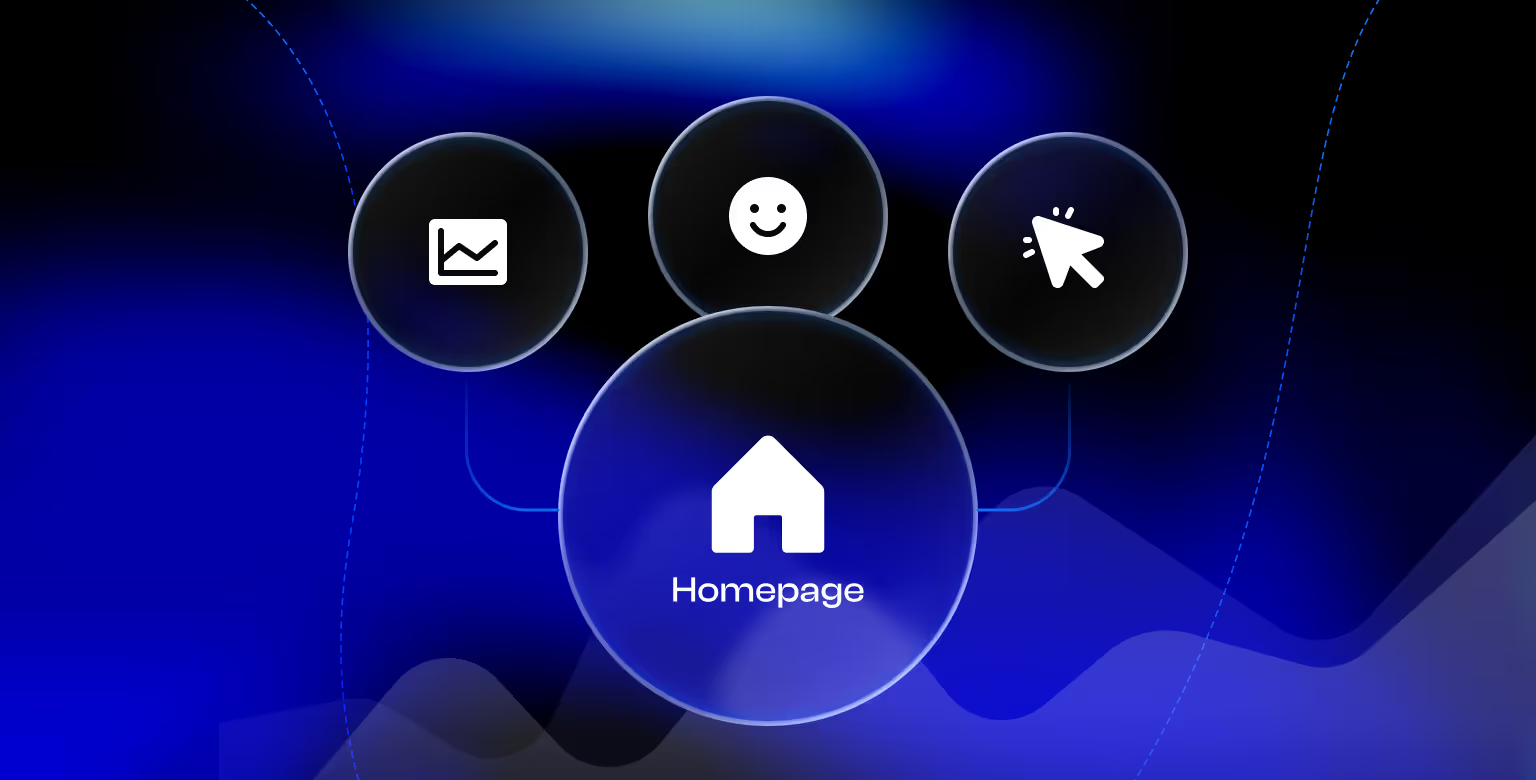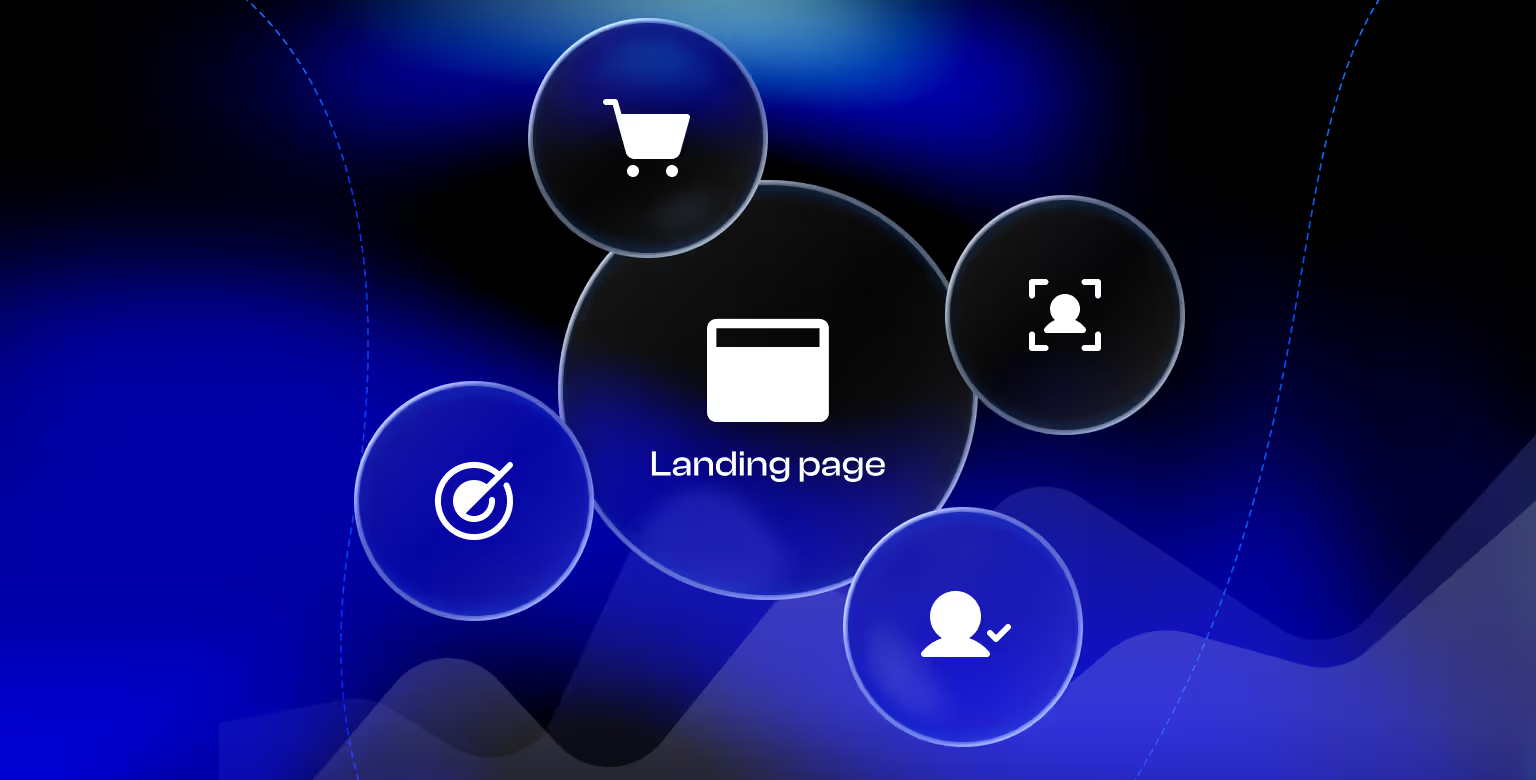Many teams mix up the jobs of these two pages, which leads to weak campaign results. This guide clarifies when to use each and how to set them up so traffic turns into meaningful outcomes.
What is a Home Page?
A home page is the main entry point to a website and the main brand page of every site. It is used to introduce the brand, its offering, and help visitors navigate to relevant pages. It is most commonly found by searching for the brand name in the search engines. It is most commonly a top-of-the-funnel page.
Key Characteristics of a Home Page
- Wide Audience: Built for everyone, and not targeting a specific conversion event.
- Navigation Hub: Used to funnel visitors into specific pages and site sections.
- Multiple Actions: Encourages visitors to explore services, read case studies, blogs, fill out contact forms, and more.
- Brand Presentation: Features the value proposition, an overview of offerings, and elements that build trust. Our B2B web design agency can further enhance this trust with intuitive, user-friendly design.
Example Structure
A typical home page often contains:
- A hero section with a headline, subheadline, and primary action button.
- A navigation bar with links to products, services, resources, and contact.
- Sections that summarize key solutions.
- Elements of social proof such as client testimonials or logos.
- A footer with legal information and secondary navigation (see our website footer examples for best practices).
The HP is the site's main hub that gives visitors a brand overview and direction.

What is a Landing Page?
A landing page is a dedicated page created for a single goal. Unlike a home page, which introduces the company as a whole, a landing page focuses on persuading visitors to complete one action. Depending on the type of landing page, it can either be a middle-of-the-funnel, or bottom-of-the-funnel page.
Key Characteristics of a Landing Page
- Targeted Traffic: Used for campaigns such as paid ads, email promotions, or social media links.
- Single Action: Designed to guide the visitor toward one step, like filling out a form or making a purchase.
- No Distractions: Navigation is limited or removed so visitors focus on the offer.
- Message Alignment: Content matches the ad or campaign source that drove the visitor there.
Example Structure
A landing page usually includes:
- A headline that reflects the promise of the ad or campaign.
- Supporting copy that explains the benefit.
- Relevant visuals or product images.
- Proof points such as reviews, guarantees, or security badges.
- A clear form or button that serves as the call-to-action.
LPs are used to turn targeted traffic into leads or customers.

Home Page vs Landing Page: Core Differences
Comparison Table
Key Takeaways
- Home pages present the brand, services, and navigation paths.
- Landing pages strip away distractions and center around one outcome.
- Sending campaign traffic to a home page often lowers conversions because the intent and page design don’t align.
When to Use a Home Page
A home page is the right choice when the goal is to introduce the brand and encourage exploration.
Best Situations
Use the HP to add checkmarks next to the following scenarios:
- Organic Traffic: Visitors find you through branded searches and/or referrals. For improving organic search visibility, consider our SEO Agency for Tech Startups.
- First Impressions: Visitors aren’t familiar with your brand and need an overview. It should answer the following questions: Who are you? What do you offer?
- Navigation Needs: Visitors looking to explore your services, resources, etc.
Use the HP to build trust, showcase your offerings, and help your visitors continue exploring the site.

When to Use a Landing Page
Want your visitors to take a specific action? Use landing pages.
Best Situations
- Paid Ads: Visitors land through either PPC campaigns, social campaigns.
- Product Launches: Single product / service dedicated pages
- Lead Capture: Visitors become leads through forms.
- Event Sign-ups: Visitors register pages for events.
LPs are most effective when they align tightly with the ad or message that brought the visitor there. Directing paid traffic to LPs ensures you are getting return on investment (ROI).On the other hand, directing that traffic to the HP only increases brand awareness. We wrote a guide on how to calculate website ROI that will help you understend the impact.
Conversion Rates: Landing Pages vs Home Pages
Landing pages consistently deliver higher conversion rates than home pages.
Why Landing Pages Perform Better
- Clarity: The page has one goal to fulfil, meaning one CTA type.
- Relevance: Messaging is tailored to the campaign that brought the visitor.
- Optimization: Best target to test layouts, copy, and visuals as they directly impact business results.
Why Home Pages Convert Less
- Too Many Options: Multiple CTAs and navigation elements compete for attention.
- Exploratory Nature: Visitors often browse instead of committing.
- Poor Match for Ads: Sending campaign traffic here usually wastes budget.
Data across industries shows that landing pages can achieve 6.6% conversion rates, which is more than twice that of home pages. For campaigns with measurable ROI goals, a dedicated landing page is the clear choice. Our Conversion Rate Optimization Experts can assist in testing and optimizing the key elements to boost conversions on your LPs.
Common Mistakes to Avoid
Confusing the role of each page type often leads to weak results. Avoid these pitfalls to make both work as intended.
Using a Home Page for Ads
Ad clicks should not land on a home page. Broad content and multiple links lower the chance of conversion.
Cluttered Landing Pages
Navigation, too many CTAs, or long copy distract from the single goal. Keep it simple and focused.
Overlooking Mobile Usability
Both home pages and landing pages must load quickly and function smoothly on mobile. Poor design here loses traffic fast.
Skipping Testing
Landing pages are built for testing. Ignoring A/B experiments means missing easy wins.
By treating each page type according to its purpose, you avoid wasted traffic and maximize results.
How to Build High-Converting Landing Pages
A landing page needs a clear structure and persuasive content to succeed. These are the essentials to include.
Core Elements
- Headline: Reflects the promise of the campaign.
- Supporting Copy: Explains the benefit clearly.
- Visuals: Images or video that reinforce the offer.
- Proof: Testimonials, client logos, or security badges.
- CTA: A form or button placed above the fold and repeated below.
Design Practices
- Use a simple layout with no clutter.
- Remove navigation to keep attention on the goal.
- Make the CTA button stand out with contrast.
- Test variations of copy, visuals, and layout.
Tools to Build
- Webflow: Flexible design and easy updates.
- Unbounce: Specialized templates and testing.
- Leadpages: Quick setup for campaigns.
The right mix of content and design makes a landing page a reliable asset for conversions. For more details on optimizing pages for conversions, see our article on high converting websites, and if you're just starting out to build your site, check our business website guide.

Home Page and Landing Page: Working Together
These two page types are not competitors. They complement each other when used correctly.
How They Support Each Other
- Home Page: Builds trust, introduces the brand, and guides exploration.
- Landing Page: Drives specific actions tied to campaigns.
Funnel Role
- Home pages work best for top-of-funnel visitors seeking general information.
- Landing pages excel for mid- or bottom-funnel visitors ready to act.
Using both in your marketing funnel helps your site educate visitors, bring them closer to the next stage in the funnel, and ultimately convert them.
Which One Should You Use for Ads?
For advertising campaigns, a landing page is almost always the better choice.
Why Landing Pages Work
- Content aligns with the ad message.
- One goal keeps the user focused.
- Higher ROI because the journey is clear.
When a Home Page Might Work
In some awareness campaigns, sending users to the home page can make sense. But for most paid campaigns, it weakens performance.
Conversion Focus
Small changes on a landing page—simpler forms, clearer headlines—often create noticeable gains. Since ad traffic is expensive, it should go to pages built for conversion.
Conclusion
Home pages and landing pages serve different roles. The home page is a brand page used to introduce the firm, while the landing pages are built for conversions.
Use HP to build trust and direct visitors. Use LPs to capture value from campaigns. Use both pages to cover the full range of your marketing funnel and improve your business bottom line results.
FAQ
What is the main difference between a home page and a landing page?
The home page as the first point of contact with the brand. In that point of contact you will get educated and get the idea of next best steps. The landing page on the other hand is often that next best step, or point of conversion.When should I use a landing page instead of my home page?
When should I use a landing page instead of my home page?
Use landing pages for targeted campaigns (ads, launches, or events).
Should I send ad traffic to my home page?
No. Ad clicks should go to a landing page so the visitor sees a message and goal that matches the ad.
Do I need both a home page and landing pages?
Yes. A home page builds credibility and supports navigation. Landing pages drive targeted conversions. Both are necessary.
Can a landing page replace my home page?
No. A home page covers the broad role of presenting the company. A landing page supports campaign traffic and conversions.



